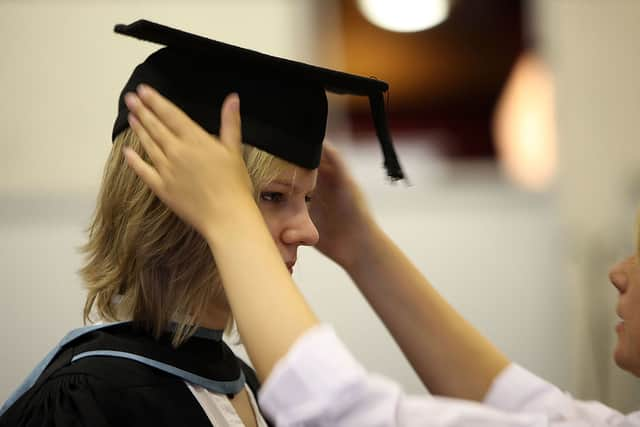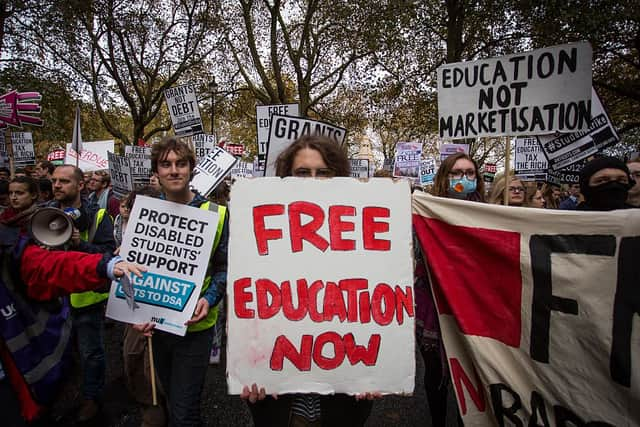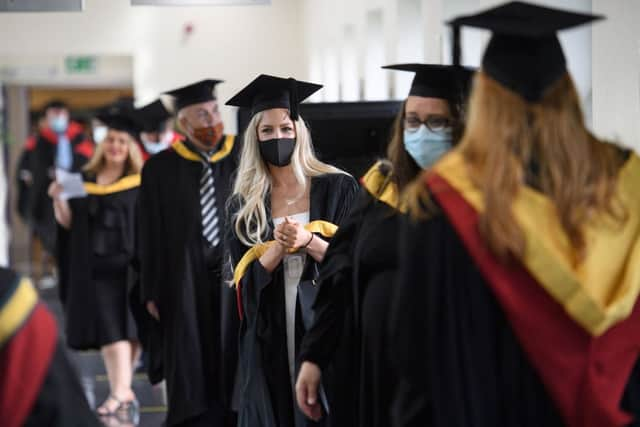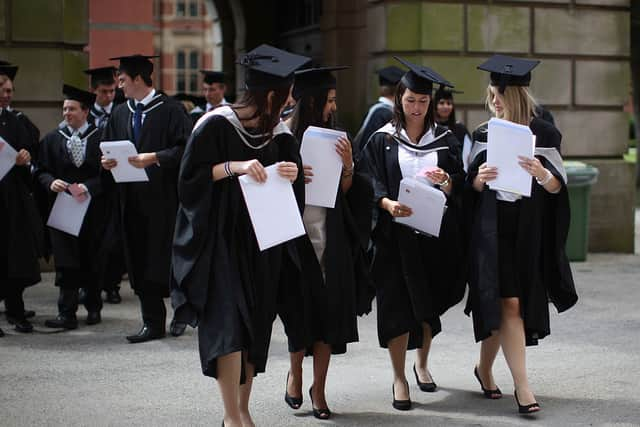Student loan interest rates 2022: what is new rate, what changes mean for UK repayments, how to check balance
and live on Freeview channel 276
University students in England and Wales have received a cost of living boost after the UK government said student loan interest rates will be cut for a second time in 2022.
The Department for Education previously capped interest rates at 7.3% for a year in June to stop a major hike in overall student debt.
Advertisement
Hide AdAdvertisement
Hide AdStudent loans are linked to RPI inflation, the rate of which has rocketed so far this year and is expected to soar even further when the new Ofgem energy bills price cap comes into force in October.
So what is the new student loan interest rate - and why has it been changed again?


What is a student loan?
Student loans - also known as tuition fees - are loans given to English and Welsh students while they are at university.
In 2012, these loans became the main way universities were funded as the government opted to get rid of the teaching grants system.
Advertisement
Hide AdAdvertisement
Hide AdAs a result student loans rose from a maximum of £3,000 a year to a new cap of £9,000 a year.
In essence, this new system removed the burden from the taxpayer and placed it onto the individual student.


It means those who attended university from the 2012/13 academic year onwards are required to pay back loans with an additional interest rate - i.e. an additional cost intended to retain the value of the loan.
This interest rate is added to the overall amount you have borrowed and doesn’t affect how much you pay back each month.
Advertisement
Hide AdAdvertisement
Hide AdIt is set every August before coming into effect in September.
While you study, the interest rate sits at a flat 4.1%.
After you graduate, the interest rate is linked to inflation as measured by the Retail Price Index (RPI) - a yardstick calculated by the Office for National Statistics - and varies depending on how much income students generate once they leave university.


Those earning more have more interest added to their loans, while those on lower salaries have less to pay back.
The current maximum rate of interest is 4.5%.
This figure consists of the RPI in March 2021 - 1.5% - and the interest for someone earning more than £49,130 a year.
Advertisement
Hide AdAdvertisement
Hide AdHere is how much interest is added to your loan depending on how much you earn:
- £27,295 or less (flat RPI rate - 1.5%)
- £27,296 to £49,130 (RPI rate plus up to 3%)
- Over £49,130 (RPI rate plus 3%)
Student loans are currently written off after 30 years - although the government will extend this to 40 years from September 2023.
You don’t pay anything back unless you are earning above the £27,295 threshold at present, but this is being reduced to £25,000 from 2023.


How are student loan interest rates changing?
Students were facing an interest rate hike of up to 12% in September 2022 as a result of inflation rocketing to 9% on the RPI in March 2022.
Advertisement
Hide AdAdvertisement
Hide AdThis increase would have meant graduates were paying much more than average mortgage rates and interest rates on unsecured credit.
High-earning graduates with a typical loan balance of £50,000 would have seen another £3,000 in interest added to their debt in the space of just six months, before an emergency mechanism would have kicked in and reduced the rate.
But in June, the Department for Education (DfE) introduced a 7.3% cap to “provide greater clarity and peace of mind for graduates at this time”.
On Wednesday (10 August), the DfE intervened for a second time to cut interest rates to 6.3% to September - almost half what they could have been.


Advertisement
Hide AdAdvertisement
Hide AdThe Minister for Skills, Further and Higher Education Andrea Jenkyns said the new cap was being put in place "to align with the most recent data on market rates".
"We understand that many people are worried about the impact of rising prices, and we want to reassure people that we are stepping up to provide support where we can," Ms Jenkyns said.
It means a graduate with a student loan balance of £45,000 would see their accumulating interest decrease by around £210 per month against what they would have accumulated had the 12% interest rate rise gone ahead, according to DfE figures.
The changes affect those with undergraduate (Plan 2) and postgraduate (Plan 3) loans.
Advertisement
Hide AdAdvertisement
Hide AdThe government also said that the move had been intended to reassure students considering starting university in September 2023.


However, despite saying the move would give a psychological boost to students and recent graduates, Save the Student - a pressure group for current and recent students - told NationalWorld the change would mostly benefit higher-earning graduates.
“It’s still the case that the mid-to-low earning graduates will not wipe their debt before the 30 year cut off,” said Save the Student spokesperson Jake Butler.
“Interest could be 5000% and this would still not make a difference to them, so cutting it to 6.3% is a purely political move.”
Advertisement
Hide AdAdvertisement
Hide AdButler added: “The government is still ignoring the major issue here, which is the lack of adequate funding via the maintenance loan to help with living costs.
“With the rate of inflation the way it is at the moment this should be the key focus.”
How to check student loan balance
If you want to see how your student loan balance is changing, you should visit the Student Loans Company website.
The publicly owned lender’s online repayment service will show you what you owe and what your monthly repayments are.
The government has also urged students and graduates to check their contact details are up to date on the site.
Comment Guidelines
National World encourages reader discussion on our stories. User feedback, insights and back-and-forth exchanges add a rich layer of context to reporting. Please review our Community Guidelines before commenting.
